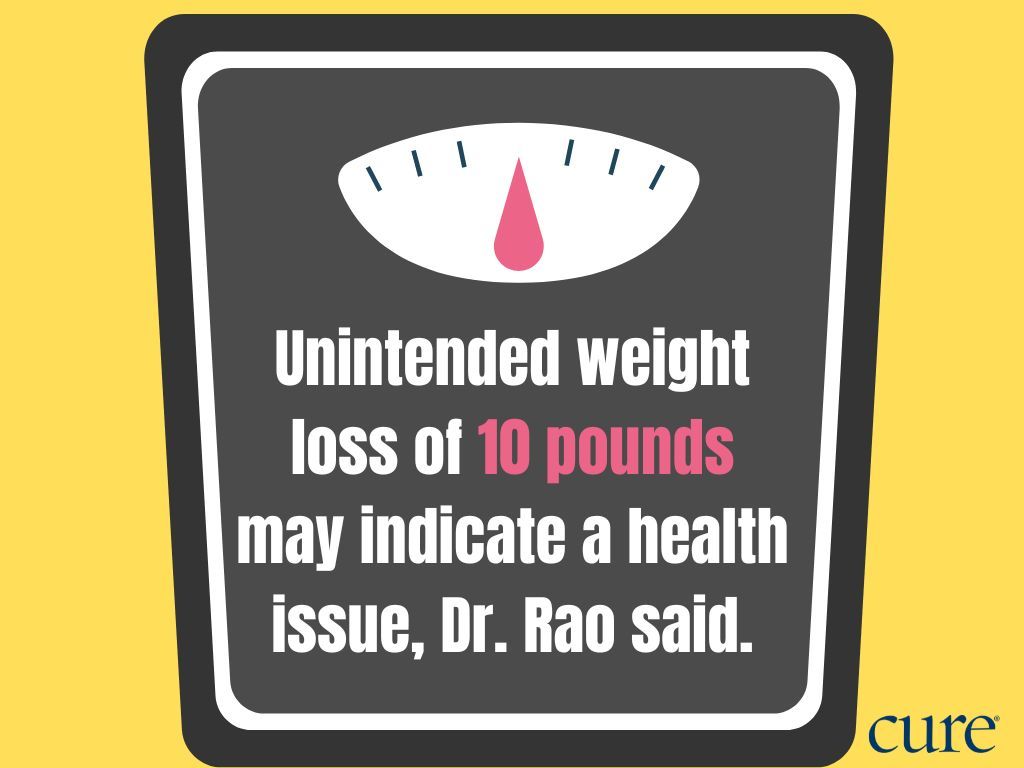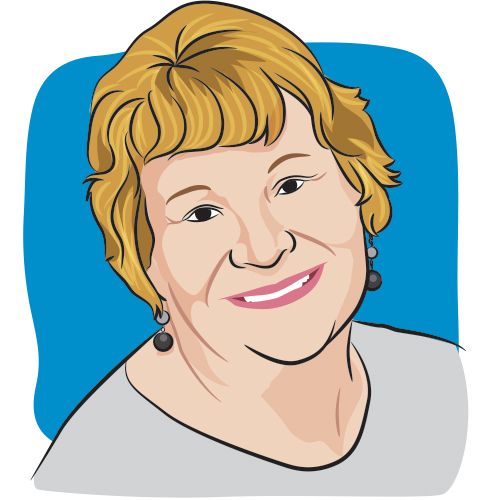Article
Unintended Weight Loss May Be the First Sign of Cancer
Author(s):
For patients with a history of cancer or who are genetically predisposed to it — as well as the general population — unintended weight loss may be the first sign of the disease, research showed.
Unintended weight loss may be an early sign of cancer, highlighting the importance frequent monitoring of weight in current patients and those with a genetic predisposition to the disease, explained Dr. Goutham Rao.
In a recent interview with CURE®, Rao, who is a professor and chair in the department of family medicine and community health at the Case Western Reserve School of Medicine in Cleveland, discussed his research regarding weight loss as an indicator to cancer. Despite this, only 21% of unintended weight loss was recognized by primary care physicians.
Further, when doctors did recognize unintended weight loss, it was more commonly associated with cancer than thyroid problems, which is something that clinicians may frequently test for when a person has unexplained changes in weight.
Unintended weight loss was more likely to occur in older patients — which Rao said was not surprising — and was more likely to be associated with cancer in this population as well.
Frequent Weigh-Ins Are ‘Simple’ and Affordable for Those With a Cancer Risk
Frequent weigh-ins can help catch health issues — such as cancer — early, an expert explained.

“Generally speaking — and we’re going to figure this out in a larger study — 10 pounds (lost) is a bit alarming. And it doesn’t matter if the person is 300 pounds or if they’re 120 pounds; you should watch out for that specific level,” Rao said. “That can be that something is going on. It doesn’t always mean it’s cancer, but something is happening that health care professionals should look into.”
For cancer survivors who are worried about secondary malignancies or who are genetically predisposed to cancer, such as those who have a known syndrome or genetic mutation associated with the disease or who have a first-degree relative with certain types of cancer, frequent weigh-ins is “the simplest thing you can think about (regarding cancer risk),” according to Rao. He added that individuals should weigh themselves once per week and monitor if there are any major changes or fluctuations.
Rao said that the scales for his study were purchased on the internet, cost approximately $15 and had large numbers so that individuals with vision problems could still see their weight clearly.
“Think about how much we spend on our overall health, on vitamins, supplements and exercise programs, and we have an early diagnostic tool that is $15 — not $15 a month, just $15,” Rao said.
Monitoring Weight Loss in Cancer Survivors
“Cancer survivors themselves are at a high risk for (secondary) cancers and often ask what they can do (to prevent recurrence or secondary diagnoses),” Rao said. “Mammograms — and for men, prostate-specific antigen testing — and chest X-rays for people who smoke, all of that is important, but I would also recommend that these people weigh themselves once a week.”
While Rao mentioned that an unexplained 10-pound loss may be cause for concern for individuals without a cancer diagnosis, the American Cancer Society recommends that patients with cancer notify their care teams if they lose three or more pounds within the course of a week, or if their body weight decreases by 5% or more over the course of a year (without trying). Symptoms of unintended weight loss can include feeling weak, tired or dizzy, an inability to complete usual activities and not being able to eat or drink as much as usual.
READ MORE: Separating Mainstream Diets From Oncology Nutrition
Next Steps in Weight-Loss Research
Looking ahead, Rao said that more research is needed regarding weight loss and the risk of cancer or other health complications. In fact, he and his team are working on another study looking at “hundreds of thousands of patients” and the recognition rate among primary care providers of unintended weight loss. Based on that data, they are hoping to determine best practices for next steps — such as blood tests, additional cancer screenings, etc. — for these patients.
“Those are the questions we are trying to answer in this larger study so that we have a guideline we have best-practice recommendations that we're going to publish and disseminate to all the cancer journals and through conferences,” Rao said. “We are about one year away from that and that, I think, is going to be a huge step.”
For more news on cancer updates, research and education, don’t forget to subscribe to CURE®’s newsletters here.





